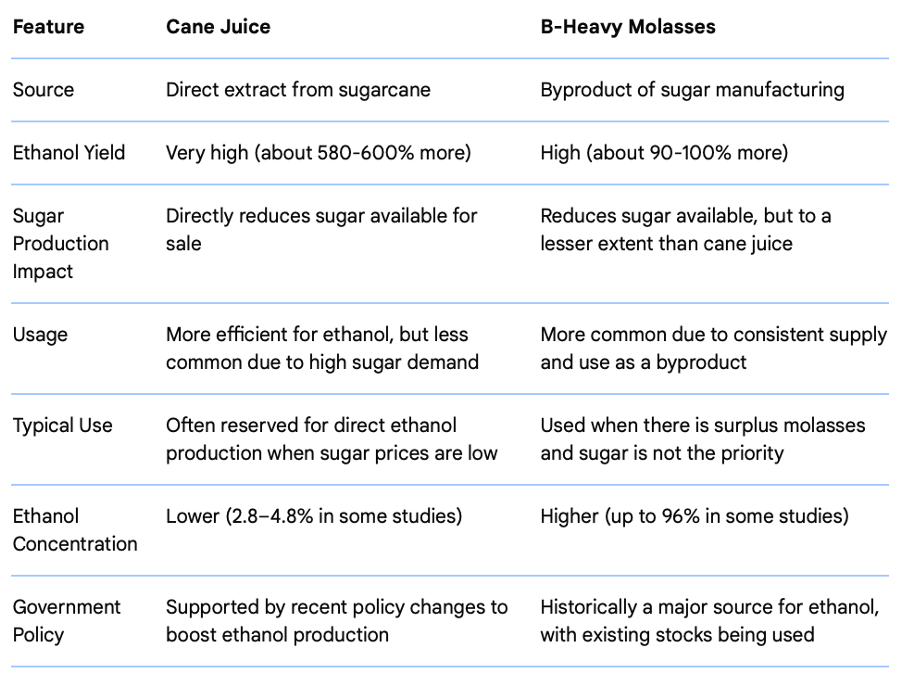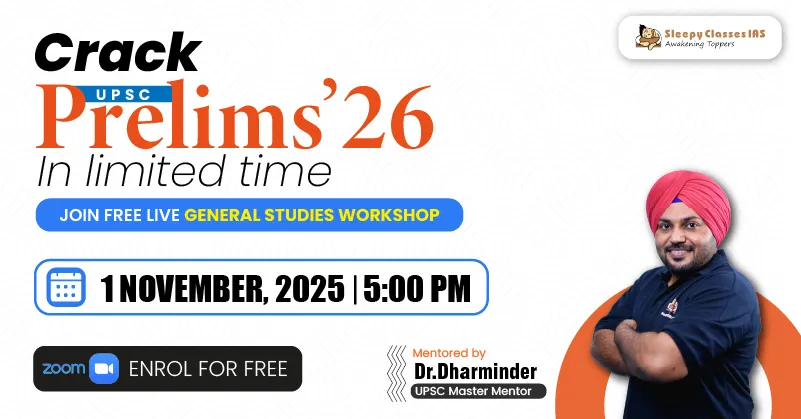Question 1
Environment | Biofuels | Medium | The Hindu
SOURCE
Consider the following:
1. Ethanol yield from molasses is more than that of sugarcane juice.
2. Ethanol concentration is higher in cane juice as compared to molasses.
Which of the statements above is or are correct?
A. 1 only
B. 2 only
C. Both 1 and 2
D. None of the above
Solution & Detailed Explanation
Answer: (D) None of the above
Detailed Explanation

Question 2
Economy | CPI | Easy | The Hindu
SOURCE
To measure consumer price index (CPI) which of the following years are taken into consideration?
A. Current Year.
B. Preceding Year.
C. Base Year.
D. Succeeding Year.
Choose the correct answer from the options given below:
A. (A), (B) and (D) only
B. (A) and (C) only
C. (A), (B) and (C) only
D. (B), (C) and (D) only
Solution & Detailed Explanation
Answer: (B) (A) and (C) only
Detailed Explanation
- There is another way to measure change of prices in an economy which is known as the Consumer Price Index (CPI). This is the index of prices of a given basket of commodities which are bought by the representative consumer.
- CPI is generally expressed in percentage terms. We have two years under consideration – one is the base year, the other is the current year.
- We calculate the cost of purchase of a given basket of commodities in the base year.
- We also calculate the cost of purchase of the same basket in the current year.
- Then we express the latter as a percentage of the former. This gives us the Consumer Price Index of the current year vis-‘a-vis the base year.
Question 3
Environment | Climate Change | Easy | The Hindu
SOURCE
Match List I with List II
| List – I | List – II |
|---|---|
| 1.Brundtland Report | (I) 1992 |
| 2.Antarctic Treaty | (II) 1991 |
| 3.Antarctic Environment Protocol | (III) 1959 |
| 4.Earth Summit in Rio de Janeiro | (IV) 1987 |
Choose the correct answer from the options given below:
A. (A) – (IV), (B) – (III), (C) – (II), (D) – (I)
B. (A) – (I), (B) – (III), (C) – (II), (D) – (IV)
C. (A) – (I), (B) – (II), (C) – (IV), (D) – (III)
D. (A) – (III), (B) – (IV), (C) – (I), (D) – (II)
Solution & Detailed Explanation
Answer: (A) (A) – (IV), (B) – (III), (C) – (II), (D) – (I)
Detailed Explanation
- Cooperation over the global commons is not easy. There have been many path-breaking agreements such as the 1959 Antarctic Treaty, the 1987 Montreal Protocol, and the 1991 Antarctic Environmental Protocol.
- A major problem underlying all ecological issues relates to the difficulty of achieving consensus on common environmental agendas on the basis of vague scientific evidence and time frames.
- In that sense the discovery of the ozone hole over the Antarctic in the mid-1980s revealed the opportunity as well as dangers inherent in tackling global environmental problems.
- The growing focus on environmental issues within the arena of global politics was firmly consolidated at the United Nations Conference on Environment and Development held in Rio de Janeiro, Brazil, in June 1992. This was also called the Earth Summit. countries of the First World, generally referred to as the ‘global North’ were pursuing a different environmental agenda than the poor and developing countries of the Third World, called the ‘global South’.
| List – I | List – II |
|---|---|
| 1.Brundtland Report | (IV) 1987 |
| 2.Antarctic Treaty | (III) 1959 |
| 3.Antarctic Environment Protocol | (II) 1991 |
| 4.Earth Summit in Rio de Janeiro | (I) 1992 |
Question 4
International Relations | Sino-India Relations | Medium | The Hindu
SOURCE
Which of the following is/are NOT among the five Border Personnel Meeting Points between the Indian Army and the People’s Liberation Army of China?
1. Daulat Beg Oldi
2. Kibithu
3. Bum la
4. Nathu la
5. Shipki La
Choose the correct answer using the codes given below
A. 1 and 3
B. 2 and 4
C. 3 only
D. 5 only
Solution & Detailed Explanation
Answer: (D) 5 only
Detailed Explanation
- Daulat Beg Oldi and Chusul in Ladakh, Kibithu and Bum-La (near Tawang) in Arunachal Pradesh, and Nathu La in Sikkim are the five official Border Personnel Meeting (BPM) Points between the Indian Army and the Chinese People’s Liberation Army (PLA).
- These designated locations facilitate regular meetings between the two armies to help de-escalate stand-offs and promote peace and stability along the border.
- These points also serve as links between India and the Tibet region.
Question 5
Geography | Transport and Communication | Easy | The Hindu
SOURCE
Match List I with List II
| List – I (Town Name) | List – II (Town Type) |
|---|---|
| A.Chandigarh | (I) Administrative Town |
| B.Kandla | (II) Transport Town |
| C.Jharia | (III) Mining Town |
| D.Jalandhar | (IV) Garrison Town |
A. (A) – (I), (B) – (II), (C) – (III), (D) – (IV)
B. (A) – (I), (B) – (II), (C) – (IV), (D) – (III)
C. (A) – (I), (B) – (IV), (C) – (II), (D) – (III)
D. (A) – (III), (B) – (IV), (C) – (I), (D) – (II)
Solution & Detailed Explanation
Answer: (A) (A) – (I), (B) – (II), (C) – (III), (D) – (IV)
Detailed Explanation
- Administrative towns and cities
- Towns supporting administrative headquarters of higher order are administrative towns, such as Chandigarh, New Delhi, Bhopal, Shillong, Guwahati, Imphal, Srinagar, Gandhinagar, Jaipur, Chennai, etc.
- Industrial towns
- Industries constitute the prime motive force of these cities, such as Mumbai, Salem, Coimbatore, Modinagar, Jamshedpur, Hugli, Bhilai, etc.
- Transport Cities
- They may be ports primarily engaged in export and import activities such as Kandla, Kochchi, Kozhikode, Vishakhapatnam, etc., or hubs of inland transport, such as Agra, Dhulia, Mughalsarai, Itarsi, Katni, etc.
- Commercial towns
- Towns and cities specialising in trade and commerce are kept in this class. Kolkata, Saharanpur, Satna, etc., are some examples.
- Mining towns
- These towns have developed in mineral rich areas such as Raniganj, Jharia, Digboi, Ankaleshwar, Singrauli, etc.
- Garrison Cantonment towns
- These towns emerged as garrison towns such as Ambala, Jalandhar, Mhow, Babina, Udhampur, etc.







